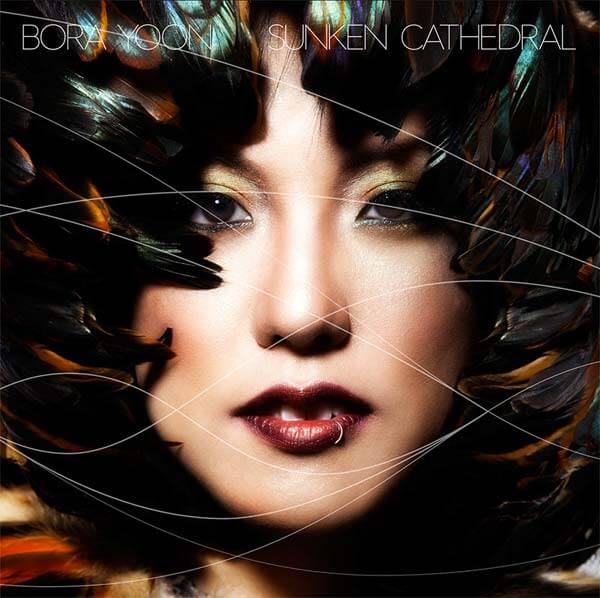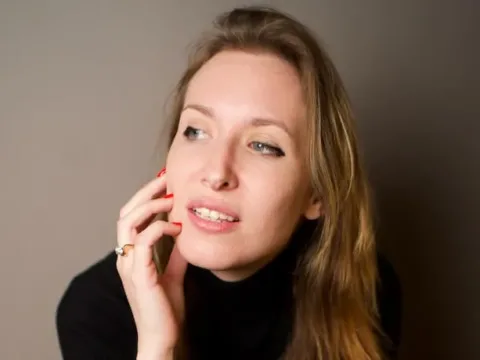 Recently, in one of those flights of randomness the internet inspires, I did a Google image search for the “relationship between sound and architecture.” I found a series of photographs and renderings of ultra-contemporary buildings, seething in a proliferation of cellular shapes (and of course, tucked in, the delightful outcasts of an image search: in this case spelunkers and a British sound artist screaming on the beach). What this picture collection said to me, minus spelunkers, was that if architecture is to embody sound, it’s going to have to vibrate, to inhabit space with a kind of virtuosic and tremulous presence.
Recently, in one of those flights of randomness the internet inspires, I did a Google image search for the “relationship between sound and architecture.” I found a series of photographs and renderings of ultra-contemporary buildings, seething in a proliferation of cellular shapes (and of course, tucked in, the delightful outcasts of an image search: in this case spelunkers and a British sound artist screaming on the beach). What this picture collection said to me, minus spelunkers, was that if architecture is to embody sound, it’s going to have to vibrate, to inhabit space with a kind of virtuosic and tremulous presence.
But what about the ways in which sound suggests or amplifies architecture? This is the central question underlying Bora Yoon’s debut album, Sunken Cathedral (Innova, 2014), which meditates on the idea that “architecture is housed within us, and outside of us—and music is a tool to circulate, transform, and illuminate those spaces.”

While her album title borrows from Debussy’s La cathédrale engloutie (1910), Yoon embraces a far more various sound world, swirling Medieval chant, ambient soundscapes, digital noise, and a whole vocabulary of obscure noises, from murmurs and scratches, to the crisp lilt of a turning page. She forges a distinct timbral vocabulary with a motley crew of innovative soundmakers: tin cans, metronomes, Buddha boxes, old cell phones, radios, water, and coins. Heavily influenced by Tibetan and Western sacred music, Yoon uses an encyclopedic array of bell sounds—chimes, Tibetan singing bowls, bike bells, a dorje, and sampled church bells. Aside from emphasizing the ritualistic aspect of her music, the bells, along with Yoon’s crystalline vocals, lend a decided coloristic stamp to her compositions. And for those of us who quickly tire of swirls of consonance (perhaps those of us who, like Milton’s Satan, find heaven just a bit too boring), Yoon balances her echo and reverb-drenched vocals and chant-like melodies with the enlivening and essential presence of noise. The found sounds and electronic soundscapes in her music act as musical roughage, as ballast and balance to a host of sweeter sounds.
Yoon’s compositions champion a visceral understanding of sound—sound as a traveling entity, sound as a revelation of space, much as light is. This elemental interest in vibrations and transmissions was particularly evident at her CD release party, held at the Asia Society on April 23, 2014. Her physicality on stage matched the ritualistic aspect of her music; as she sang she slowly paced the stage, making her way to various instruments and noise-makers with deliberate motions, using her hands expressively. Yoon describes her album as a hybrid performance work, and for the CD release concert she added Korean traditional dance and drumming by Vong Pak and video projections by Adam Larsen and Jacob McCoy.
Some of Yoon’s compositions borrow from existing vocal music; in “O viridissima virga” Yoon takes the antiphon chant by Hildegard von Bingen and embeds it in a shimmering soundscape. During the live performance Yoon placed a Buddha box, a hardware loop player resembling a small radio which produces ambient sounds, on a miked turntable. As the Buddha box turned in lazy circles, a looping Doppler effect was created according to its proximity to the microphone, a groove around which more arrhythmic sound elements circulated. This piece, like many on the album, gathered momentum through a process of gradual accumulation, adding in field recordings of birds in Tokyo and a hailstorm in Sante Fe as the fluttering and scraping sounds on the electronic track intensified. In the background, video projections featured blurring and abstracted lights. The austere beauty of Hildegard’s chant was enhanced by Yoon’s multimedia re-rendering, and indeed Hildegard herself, as a combined composer, philosopher, mystic, and polymath, might be an appropriate patron saint for Yoon’s album.

On the darker side of the album, “In Paradisum,” a moving lament dedicated to the memory of Yoon’s father, uses a medieval chant from the Requiem mass. An atmospheric, almost sinister beat, comprised of subwoofer pulses, barking dogs, and a pen scribbling on a page, provides a melancholy groove for vocals that lie evocatively between humming and keening. As the soundscape of the track accumulates, it progressively lightens, adding Buddha boxes and echoing strings. In a wonderful moment during the live version, Yoon sat on the floor of the stage and began rolling and eventually throwing a set of musical chime sticks on the floor. Setting in motion a splendid clatter as the soundscape circulated around her, she embodied a lovely chaos. It is this acute attention to the primitive act of making sound—a willingness to set an object vibrating, to let it spin, that gives Yoon’s work its distinct expressive quality.
And as for Yoon’s claim to investigate the intersection between sound and architecture? If we take architecture in its widest sense, as an inflection point between the formed and unformed, then all patterned sound would qualify as architectural in nature. In referencing architecture, then, Yoon seems to be instead pointing to the relationship between her ideas, arising in what she calls the “chambers of subconscious,” and the spaces her music lives in—the transmission of external vibrations that emblemize an inner architecture, structuring energy out of a complex amalgam of associations and memories. In this sense the use of field recordings on her album is particularly powerful; from recorded voicemails from her mother to the rasp of barking dogs, these sounds carry with them an immediate sense of environment—the particular, tangy stamp of a time and place.
























